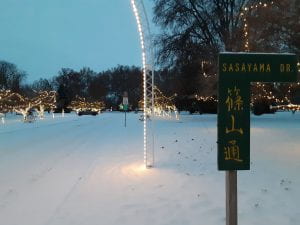Bhavesh Gulrajani ’23, English Major and Creative Writing minor, shares about their internship researching Walla Walla and its sister city in association with Tamba-Sasayama
“Learning about Walla Walla’s Sister City
 I’ve been researching about Walla Walla’s sister city affiliation with Tamba-Sasayama — a comparably small town in Japan. “Sister cities” refer to officially-recognized relationships that towns create with one another across countries. President Eisenhower, in response to mounting Cold War tensions, founded the sister cities program in 1956, which has helped foster a grassroots form of diplomacy.
I’ve been researching about Walla Walla’s sister city affiliation with Tamba-Sasayama — a comparably small town in Japan. “Sister cities” refer to officially-recognized relationships that towns create with one another across countries. President Eisenhower, in response to mounting Cold War tensions, founded the sister cities program in 1956, which has helped foster a grassroots form of diplomacy.
In the context of post-WWII politics, sister city affiliations can be understood as a way of restoring international ties. This seems particularly true in the case of US-Japan relations. The cities of Saint Paul, MN, and Nagasaki, Japan, established the first trans-Pacific relationship in 1955. Others soon followed, such as Seattle and Kobe (nearby Tamba-) becoming sisters in 1957; eventually, the cities of Walla Walla and Tamba-Sasayama tied the knot, in 1972.
Last year marked the 50th anniversary of W.W.’s relationship with T-S, but COVID-19 had postponed those celebrations to this year. In fact, although their relationship has been largely sustained through an yearly exchange-student program, no students have been able to visit either town since 2019. So, for several reasons, the resumption of exchange visits this year seem especially vital.
I spoke with a few members, both past and present, of W.W.’s sister city committee. Dustin Palmer has been the committee’s chairman since 2018. After an orientation meeting at the chapel, in which students were being prepped for their October visit, Dustin and I chatted over tacos from the tacos truck. Barbara Noel is the committee’s longtime secretary, and we chatted over salads at Yamas. (She then drove me around town, because it’d slipped that I hadn’t seen much of W.W. beyond Main Street.) And Robert Keatts ran the committee in the 2000s, and we chatted at his place over a charcuterie board. (His place was grotesquely impressive, too much for my eyes that were accustomed to unassuming off-campus rentals.)
The committee has been preparing for two upcoming visits: T-S folks will visit W.W. at the end of August, and W.W. folks will visit T-S in October. Barbara has been working on a commemorative plaque and statue to be erected on the bridge at Spokane St. (beside the Thai takeout joint), where she hopes the plaque can be presented in August. Dustin and Robert are both planning to travel with the W.W. students in October, in spite of their demanding lives: Dustin has a two-year-old, while Robert’s wife has cancer. Clearly, this exchange program means a lot to them. (And I forgot to mention, but they’re all volunteers; they don’t get paid.) They all passionately spoke to me about their love for the program, and I felt inspired listening to them, even a little envious.”